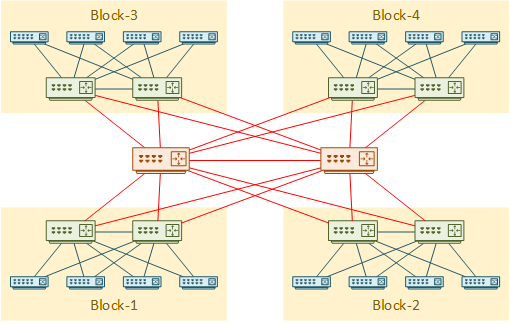
Modular Network Design
Last Updated: [last-modified] (UTC)
There are a few simple guidelines when designing a network:
- It should be easy to deploy
- It should be easy to manage
- It should be flexible and scalable
- It should be resilient and secure
To achieve this in the campus or data centre, a designer will consider modularity.
Modularity means building the network on logical components. This breaks the network into distribution blocks. Each block can be deployed like a template.
Distribution Blocks
Modules make the network scalable, understandable, stable, and simpler to troubleshoot
A pair of distribution switches is the basis of a distribution block. Network devices downstream of the distribution switches are part of the distribution block.
One advantage of this design is isolation. Each distribution block is separate from the rest, so a fault in one block will not affect any other block. This improves the availability of the network.
Troubleshooting is also easier. Imagine that there is a spanning-tree issue in a block. You will only need to troubleshoot that one block, rather than the whole network.
Blocks simplify change management. Scoping a change to a single block is now possible, reducing the impact of the change.
This also provides a repeatable design template. Need to grow the network? Deploy another distribution block. The same applies to updates. If you need to upgrade, you can replace components in a block, one block at a time.
Using modular blocks can also support routing and summarization. Notice that this supports summarization. You will still need a good IP addressing scheme and routing design.

There are two types of distribution blocks. These are the Access-Distribution block, and the Services block
Access-Distribution Block
The Access-Distribution block is any block where hosts connect to the access layer. In the campus, this may be workstations, phones, access points, printers and so on. In the data centre, this would be where servers connect.
The virtual switch design model complements the Access-Distribution block well.
Hierarchical design principles apply in this distribution block
[maxbutton id=”4″ text=”Hierarchy Design” url=”https://networkdirection.net/Hierarchy+Design+Part+1″]
Services Block
Any non-access services connect to the services block. This includes load-balancers, firewalls, edge routers, wireless controllers, and so on.
There is no restriction on the number of services blocks.